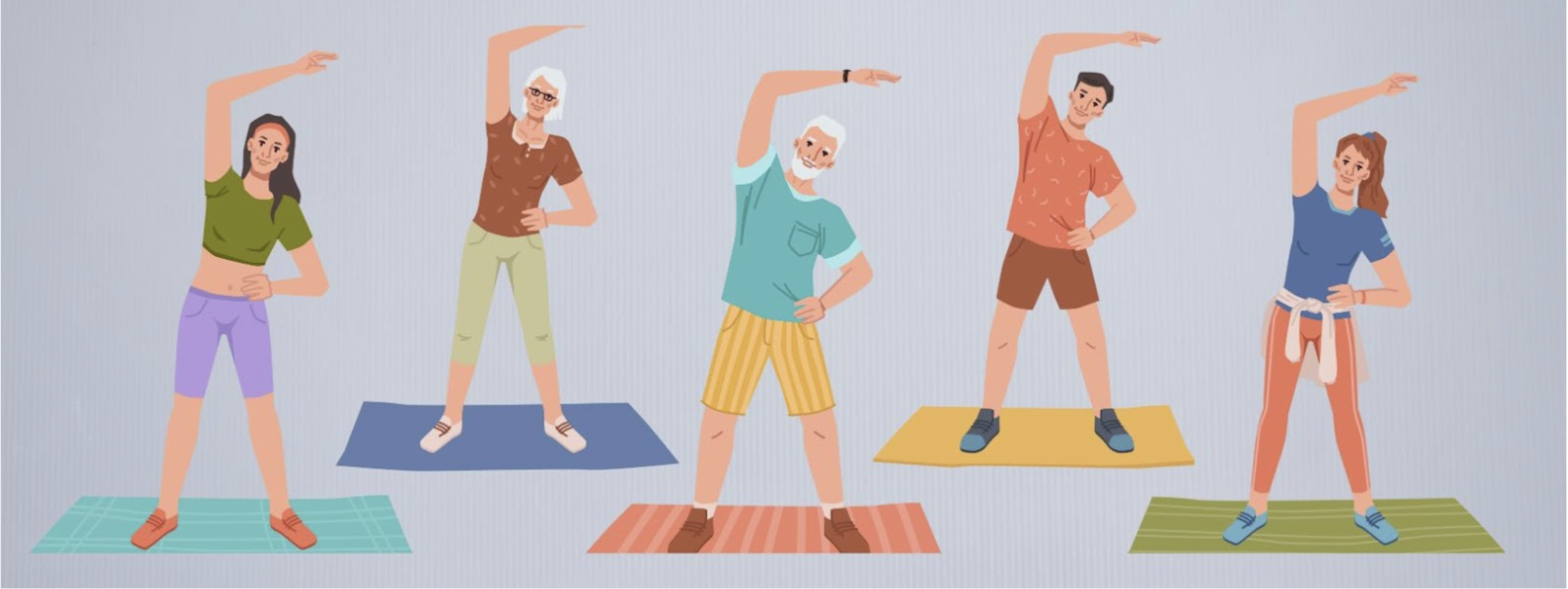
|
Emmalyn J. |
|
|
Februrary 28, 2025 · 3 min |

Stretching is often overlooked, but it plays a crucial role in maintaining overall health and mobility. By
keeping our muscles flexible, strong, and healthy, stretching helps ensure our joints move freely. Without
regular stretching, muscles can become tight and shortened, increasing the risk of joint pain, strains, and
injuries.
For example, if you sit for long hours at a desk, your hamstrings (muscles at the back of your thighs) can
become tight. This tightness may make it difficult to fully extend your leg or straighten your knee, affecting
your ability to walk properly. Similarly, suddenly engaging in physical activity without proper stretching can
result in muscle strains or even injuries. Healthy, flexible muscles prevent injuries and support balance,
reducing the risk of falls.
With so many muscles in the body, creating a daily stretching routine might seem overwhelming. However, focusing on key areas essential for mobility is a great starting point. Prioritize stretching your lower extremities, including:
- Calves
- Hamstrings
- Hip flexors
- Quadriceps
Additionally, stretching your shoulders, neck, and lower back can help with posture and alleviate tension. Aim to stretch daily or at least three to four times per week for the best results.
1. Enhances Flexibility
Improved flexibility makes everyday movements easier and can delay the mobility loss that often comes with
aging.
2. Expands Range of Motion
Stretching allows your joints to move more freely, giving you better movement capabilities and reducing
stiffness.
3. Boosts Physical Performance
Dynamic stretching before exercise prepares your muscles for activity, enhancing performance in workouts and
sports.
4. Improves Blood Circulation
Stretching increases blood flow to muscles, reducing soreness and speeding up recovery time after exercise.
5. Promotes Better Posture
Muscle imbalances can lead to poor posture. Stretching helps correct these imbalances, improving alignment and
reducing pain.
6. Supports Back Health
Tight muscles can contribute to back pain. Regular stretching strengthens and loosens muscles, preventing and
relieving discomfort.
7. Relieves Stress
Muscles tense up in response to stress. Stretching, particularly in areas like the neck, shoulders, and upper
back, helps relieve this tension.
8. Calms the Mind
Incorporating mindfulness or deep breathing during stretching can help relax the mind, promoting mental
well-being.
9. Reduces Tension Headaches
Stretching can alleviate tension headaches by reducing muscle tightness and improving circulation. When
combined with hydration, proper nutrition, and rest, it can be a natural way to ease headaches.

Whether you’re an athlete or someone who spends hours at a desk, stretching should be an essential part of your routine. It’s a simple yet powerful way to maintain mobility, reduce pain,